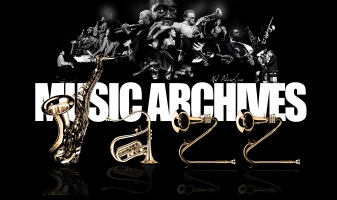
 |
Henry Martin – ‘Charlie Parker, Composer’ |
Post Reply 
|
| Author | |
snobb 
Forum Admin Group 

Site Admin Joined: 22 Dec 2010 Location: Vilnius Status: Offline Points: 30602 |
 Post Options Post Options
 Thanks(0) Thanks(0)
 Quote Quote  Reply Reply
 Topic: Henry Martin – ‘Charlie Parker, Composer’ Topic: Henry Martin – ‘Charlie Parker, Composer’Posted: 18 Dec 2020 at 8:16am |
|
(Oxford University Press Hardback 338pp. Book review by Andy Hamilton) The founder of bebop was born 100 years ago this year – an anniversary that for obvious reasons has been somewhat overlooked. As author Henry Martin argues, Bird’s reputation as an improviser of genius has meant that his career as a composer has been rather neglected. In his new volume, Martin rebalances our understanding. He begins with an overview of Parker’s life and musical training, but the bulk of the book is a critical analysis of Parker’s compositions. It features some intriguing discussion and observations, as well as dense but – as far as I can see – highly perceptive musical analysis. Martin is Professor of Music at Rutgers University in Newark – a composer, music theorist, and pianist, whose earlier titles include Charlie Parker and Thematic Improvisation (1996). Martin catalogues 84 compositions, examining their development and aesthetic qualities, dividing Parker’s works into seven types. This is the first assessment of a major jazz composer’s output in its entirety, and as the blurb rightly comments, it has music-theoretical, historical, and philosophical implications. Among the issues that Martin considers are whether Parker’s compositions are just frames for improvisation, why he almost always used the harmonic layout of existing songs as the basis for his compositions, and the relation of Parker’s blues to classic blues. As Martin comments, a composition is “traditionally considered to be music created in advance… for performance” (p. 1). But he cites ethnomusicologist Bruno Nettl’s argument that the composition/ improvisation distinction is particularly apt for Western music – another way of saying it’s ethnocentric, because in other cultures the distinction is unclear. Martin asks whether jazz improvisers “perform” the songs or compositions that they improvise on, given that they take the pre-existing music as a guide only: “it could be argued that calling Parker’s bebop themes ‘jazz compositions’ may be less appropriate than viewing the totality of the jazz performance, the complete artistic entity, as the ‘composition'” (p. 2). Or indeed, he adds, a jazz “work”. (The theme or song is a composition, I’d argue, but the jazz improviser does not perform it.) He contrasts the “jazz composer” as traditionally understood – the select canon of Morton, Ellington, Gil Evans and a few others – who wrote multi-sectioned works, and the composer in Parker’s sense, of the smaller-scale work for improvisation. Martin correctly notes that the existence of recordings may convert jazz performances into compositions or indeed repeatable works. I’d suggest that distinguishing two senses of “composition” helps resolve the preceding philosophical issues. These are broad and narrow senses: (1) In music and performing arts, composition is opposed to improvisation – composers are mostly desk-workers who produce works, usually notated. There is no music that is not composed, in a broad sense. The distinction between broad and narrow senses explains why some improvisers refer to improvisation as a compositional method. Improvisation as a compositional method involves (1) Spontaneous composition Martin’s seven-part typology begins with ’32-Bar Rhythm Changes Compositions’, and concludes with ‘Through-Composed Blues In C’, and finally ‘Riff Blues’ – each given a dedicated chapter. The first composition in the ‘Rhythm Changes’ chapter is Red Cross from 1944. To warn the reader, the analysis is often technical: “The A section can be seen as built on two motives… Motive X is the dyadic C-Bb, while Y is the octave Bb4-Bb3 that introduces “mop mop”… the Parker figure that initiates the first bridge… is interesting insofar as supported by a D7 chord, its basic motion as G-F#-E begins and ends with non-chord tones” (pp. 58-9). But interspersed throughout are intriguing observations and discoveries. Confirmation, for instance, is Parker’s only composition that may not be a contrafact – it bears a resemblance to the 1944 song Twilight Time by Nevins-Nevins-Dunn, though the bridges are different. Even more intriguing, the atypical My Little Suede Shoes turns out to be based on two French songs popular around 1950, Pedro Gomez and Le Petit Cireur Noir. As early as 1947, Relaxing At Camarillo was cited as a prime example of bebop rhythm. Ira Gitler recalled talking to a young saxophonist who commented, “If you can play Camarillo, you’ve got the whole thing” (p. 142). The book is encyclopaedic in scope, and prompted me to think again about Bird. Further issues that might have been pursued include whether the distinction between through-composed and riff blues involves the influence of relative complex Tin Pan Alley harmony on the blues; and why on Parker played and composed in a generally limited number of keys. I’m thinking here of Lee Konitz’s comment, in an interview for my book with him, on Bird’s understanding of harmony: “Red Rodney… never heard Bird discussing the changes, and whenever Red would ask him what the change was at some point, Bird would make a kind of Zen comment… Dizzy, I think, was the one who was really harmonically sophisticated, and was cueing him into that.” But this is a really splendid scholarly work, the product of much labour. There are many transcriptions and examples, including sheet music from the Library of Congress catalogue, and the scholarly apparatus is exhaustive. It includes tables that connect Parker’s songs to each other in form, key and harmonic source. The result is an indispensable account for scholars of Parker and bebop. LINK: Charlie Parker, Composer at OUP from https://londonjazznews.com Edited by snobb - 18 Dec 2020 at 8:19am |
|
 |
|
Post Reply 
|
|
|
Tweet
|
| Forum Jump | Forum Permissions  You cannot post new topics in this forum You cannot reply to topics in this forum You cannot delete your posts in this forum You cannot edit your posts in this forum You cannot create polls in this forum You cannot vote in polls in this forum |